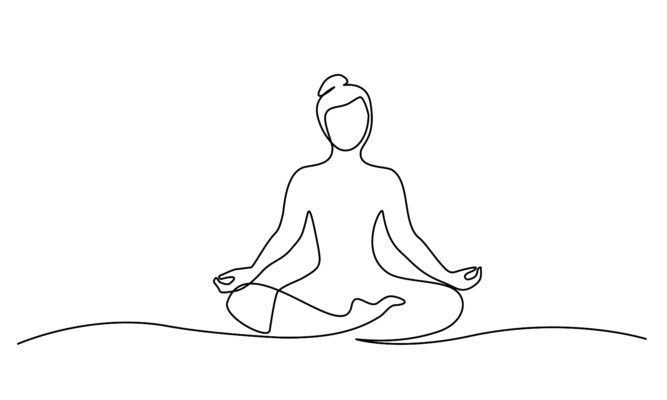In the fast-paced world we live in, distractions lurk around every corner. Whether it’s work, school, or just everyday life, maintaining our focus is often a challenge. However, there’s a powerful tool at your disposal – yoga. And guess what? It’s backed by research. Yoga is more than just twisting into pretzel-like poses and chanting “Om.”
It’s a holistic practice that can help you reclaim your attention span, improve your concentration, and reduce stress. So, let’s dive into this journey of mindfulness and focus, the yogic way.
The Science Behind Yoga and Concentration
Before we roll out our yoga mats, let’s peek at the science behind this practice. Multiple studies have shown that yoga through enhanced blood flow to the brain and neurotransmitter regulation can do wonders for our cognitive functions.
Yoga encourages relaxation, reduces anxiety, and fosters a balanced state of mind, allowing individuals to concentrate more effectively. Regular yoga practice is associated with improved attention, memory, and the ability to focus.

5 Yoga Poses to Enhance Concentration
1. Mountain Pose (Tadasana)
Start by standing with your feet together or hip-width apart, aligning your body vertically. Ground your feet into the floor, distributing your weight evenly. Engage your leg muscles and tuck in your tailbone. Roll your shoulders back and down, letting your arms hang naturally by your sides. Keep your chin parallel to the ground and your gaze forward.
2. Child’s Pose (Balasana)
Start with a pose that symbolizes surrender – the Child’s Pose. Kneel on the mat, bow forward, and reach your arms out. Close your eyes and focus on your breath. It’s a great way to calm your mind and prepare it for focused attention.
3. Tree Pose (Vrikshasana)
Stand tall, ground one foot, and place the other against your inner thigh or any part of leg below the knee. Find a focal point to balance, and notice how this pose enhances your concentration and balance.
4. Seated Forward Bend (Paschimottanasana)
Sit with your legs extended and reach for your toes. This pose soothes your mind and enhances blood flow to your brain, boosting your concentration.
5. Corpse Pose (Savasana)
Lie down on your back, palms facing up, and legs relaxed. In Savasana, you clear your mind and practice stillness. This may seem easy, but it’s a tough nut to crack. It teaches you to let go of distractions and concentrate on the present moment.
Breathwork for Laser-Like Focus
Pranayama, or yogic breathwork, is a vital part of enhancing concentration. One of the most effective techniques is “Nadi Shodhana” or alternate nostril breathing. This technique calms the nervous system, reduces stress, and boosts your ability to concentrate.
Creating a Routine
Incorporating yoga into your daily life can be a game-changer. Start with a few minutes of deep breathing and gentle stretches in the morning. You’ll be amazed at how this short routine can set a focused tone for your day.
During your work or study breaks, try a quick yoga session. Even a five-minute series of poses can recharge your brain, clear mental fog, and get your creative juices flowing.
End your day with yoga to de-stress. A calming routine will wash away the day’s worries and prepare you for a peaceful night’s sleep, ready to tackle whatever comes your way the next day.
Final Thoughts – Yoga for Physical and Mental Health
Yoga isn’t just a physical practice; it’s a way to enhance your mind and body connection. By incorporating yoga into your daily routine, you’ll notice a marked improvement in your focus, attention, and overall cognitive functions.
Remember, yoga is about progress, not perfection. Don’t stress if you can’t master a pose right away. The key is to enjoy the journey and reap the benefits. So, roll out that mat, find your balance, and breathe deeply – your focused, more centered self awaits!
Disclaimer: The information provided in this article is for educational purposes only and is not intended to replace the advice of your healthcare provider. Always consult your healthcare provider before beginning any new exercise program, including yoga, especially if you have a pre-existing medical condition or are experiencing chronic back pain. While every effort has been made to ensure the accuracy of the information presented, the author and publisher cannot be held responsible for any errors or omissions or for any consequences resulting from the use of this information.
About the Author: Dr. Ashis Das is a physician with a Doctorate in Public Health from the University of London. He is a certified yoga teacher and passionate about social transformation through effective preventive, promotive and curative practices. Dr. Das has taught yoga to children, adults, and seniors across four continents, blending yoga, yoga therapy, Ayurveda, and music therapy. He has collaborated with global agencies like WHO, Unicef and the World Bank, assisting several countries in experimenting with innovative health solutions. Dr. Das generates and synthesizes scientific evidence on yoga and related practices for health and well-being, and has published more than 100 scientific articles and reports. He can be followed on Facebook and LinkedIn.

